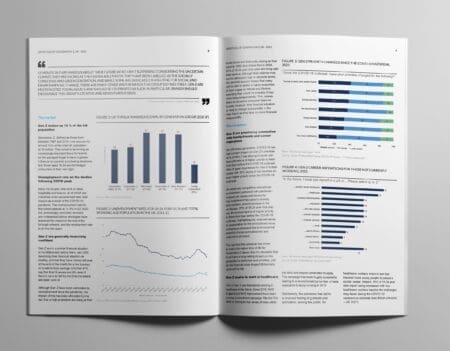Innovation was a recurring theme on Day 3 as the Money20/20 agenda continued to focus on the future of payments. In a morning roundtable on network innovation, Gary Lyons, MasterCard’s Chief Innovation Officer, explained how innovation is being driven by the expansion of players in the ecosystem, while Jim McCarthy, Visa’s EVP of Innovation and Strategic Partnerships, spoke of the need for a “reboot” for a digital age. In a later keynote, Accenture’s Michael Abbot described an industry that is at an “inflection point” of the like that we haven’t seen for many years. Merchant experiences, voice commerce and the growth of digital wallets were cited as notable areas for innovation in 2017. Here are the highlights from Day 3:
Walmart Pay
Walmart’s Daniel Eckert took to the keynote stage to provide some insight into the recent launch of Walmart Pay, which is designed to improve the checkout experience for the 140 million consumers that visit Walmart each week. The company is initially targeting more than 26 million consumers that fall into Walmart’s “Busy Family” segment, who value their time as much as they value saving money. “Time is the new currency,” according to Eckert, who also revealed how Walmart initially identified Millennial males as early adopters. However, it turned out that higher income Generation X and Baby Boomer females were more likely to adopt the new service.
The directive was to build Walmart Pay in just 6 months and to design a solution that is accessible to consumers in terms of the mobile device and payment method used in the app. Eckert explained how the design process involved ideating around a “utopia of shopping,” which might not be realistic, but could inspire a “magical experience” that could be implemented (See “Zooming” from Day 1). Walmart achieved its timeline goal – launching in June – which is quite the feat considering that it has more than 4,600 stores and 1.4 million associates nationwide.
What we think
Walmart Pay is bucking the conventional thinking regarding mobile payments – that rewards will drive mobile pay adoption – by developing a merchant payment app that is unlikely to ever include rewards, given Walmart’s focus on price. Walmart’s scale allows it to block the other “pays” from being accepted in Walmart, which means customers have no choice but to use Walmart Pay. However, Walmart is also focused on driving adoption through additional functionality, such as electronic receipts and electronic gift card storage, as well as, ultimately, the ability to scan products in the aisles and skip the checkout altogether.
Synchrony’s Mobile Plug-in (SyPi)
Synchrony Financial has taken a different approach for its retail partners, as was explained by President & CEO, Margaret Keane. Synchrony has developed a mobile payments “plug-in” that can be integrated into the apps of Synchrony’s retail payments partners to allow consumers to view their account balance and purchase activity, as well as make a payment and check their available credit line. The plug in is called “SyPi” and has already been adopted by Lowes and Dicks Sporting Goods. According to Keane the plug-in has already processed 10 million payments and received 500k unique visits since its launch.
What we think
Apple Pay still only accepts a handful of store cards, so by developing a customizable mobile payments “plug in” that can be integrated into retailers’ existing applications, Synchrony is addressing a potential pain point for some retailers that enables them to drive additional usage and engagement of their apps.
Lending Club Moves into Auto Refinancing
Scott Sanborn, the recently appointed President & CEO of Lending Club, announced Lending Club’s new initiative to disrupt the auto financing market. According to Sanborn, out of the $1 trillion in outstanding auto loans, approximately 80% is originated at the dealership, with an average APR of 8.78%. Sanborn believes that this incorporates approximately $25 billion in excess fees that Lending Club can tap into by providing lower rates and a better experience for consumers. Lending Club aims to save consumers an average of $1350 per loan while also offering a resilient asset for investors that will generate an annual income of 3%.
What we think
This is a bold move for Lending Club, given that sub-prime auto loan defaults have been increasing recently and used car prices have started to fall. It’s not clear to what extent Lending Club will expose itself to sub-prime risk during an uncertain time for the market.
Andrew Davidson is SVP/Chief Insights Officer for Mintel Comperemedia. He is an expert in data-driven cross channel marketing intelligence, consumer behavior and global trends. As a thought leader and expert speaker, Andrew has consistently predicted the evolution of payments marketing for the past 23 years. He speaks at high profile industry events and has presented at conferences in the US, Canada, Australia, New Zealand, Hong Kong and Taiwan. Andrew is passionate about the global role of payments as the first step on the path to financial inclusion.








































